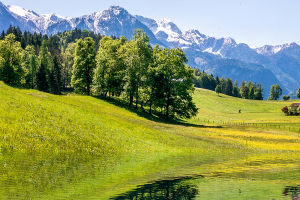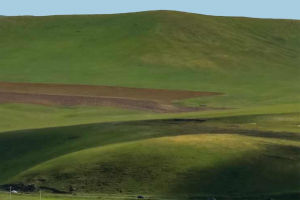Desert Hero Tree
Populus euphratica, also known as the "Desert Hero Tree", is a perennial deciduous tree belonging to the Salicaceae Populus genus.
This tree is considered the oldest poplar in the world and has survived on the earth for more than 65 million years, making it a precious tree species that has persisted since the third century. Botanists hail Populus euphratica as a "living fossil" of ancient tree species.
This tree species typically grows to heights of 15-30 meters and has an age range of 100-300 years. Populus euphratica is commonly found in the Gobi desert and has evolved special biological characteristics that enable it to thrive in its arid and saline-alkaline environment.
The changes in roots, leaves, branches, cells, reproduction, and other physiological features of Populus euphratica allow it to adapt to growth in sandy soil. It is resistant to drought, salinity, severe cold, and extreme heat, making it the only tall deciduous tree capable of growing into a forest in the desert.
However, Populus euphratica is a slow-growing plant that takes decades to mature into a full-grown tree. The growth rate of this tree species is affected by various environmental factors such as temperature, moisture, and soil conditions, among others. Under optimal growing conditions, the annual growth of Populus euphratica can reach 5-10 cm.
One of the most fascinating features of Populus euphratica is its unique survival skills. Its roots can penetrate up to 20 meters into the earth to absorb groundwater, providing the tree with ample moisture.
Populus euphratica can also store a large amount of water in its body, which helps it to withstand drought. The cells of Populus euphratica have special functions that allow them to thrive in alkaline water, and the tree has a high concentration of cell sap that enables it to continuously absorb water and nutrients from saline-alkali groundwater.
Populus euphratica is a valuable forest resource in desert areas, often growing in the desert, and is resistant to cold, drought, salt and alkali, wind, and sand, and has strong vitality.
The Populus euphratica forest is a precious and unique forest resource in desert areas, serving the primary function of preventing wind and fixing sand, creating a suitable oasis climate and forming fertile soil.
Populus euphratica is a key species in the desert ecosystem, with important ecological value. The tree helps to prevent wind and sand erosion, protect soil and water sources, and maintain the balance of the desert ecosystem. Populus euphratica is also an important timber resource, widely used in construction and furniture.
Aside from the characteristics and values mentioned above, Populus euphratica also has some interesting properties and uses. For instance, the bark of Populus euphratica can be used to make folk handicrafts such as straw hats and sandals.
The fruit of Populus euphratica is a nutritious food that is picked and eaten by local people. Populus euphratica fruit is rich in nutrients such as protein, fat, sugar, vitamins, and minerals, which are beneficial to human health.
In recent years, Populus euphratica forests have been facing some challenges due to climate change and human activities. These challenges include desertification, water shortage, and interference from human activities.
To protect and maintain this precious natural resource, many conservation and restoration projects have been implemented, including afforestation, water resource management, and ecotourism, among others.
These efforts help to maintain the ecosystem function and ecological landscape of the Populus euphratica forest while promoting sustainable development in local social economies.
Therefore, it is necessary to continue the research on the ecological adaptability and resource utilization of Populus euphratica, and to develop and innovate in the field of forestry and environmental protection, so as to promote the coordinated development of ecological protection, environmental improvement, and sustainable economic development.


